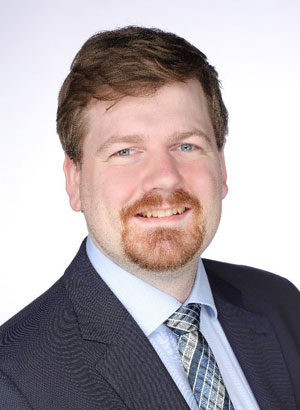
Christoph Bohr is a PhD student (scholar of the Evonik Foundation) at the University of Cologne, Germany. His current research topic is „Electrospun Perovskite Fibers for Flexible Applications”.
Christoph Bohr received his M.Sc. degree in Chemistry with excellence in the University of Cologne. His Master thesis topic was: “Electrospun Tin and Lead Perovskites in Comparison with Thin Films”. His B.Sc. degree, he received at the same university with a focus on inorganic and organic chemistry.
Christoph Bohr is a co-author of several publications and an active conference contributor. He has a proven record of the volunteering in such organisations as Materials Research Society and Rhine Ceramics Chapter Cologne, and work experience at Evonic Industries and the University of Cologne.
1. Please summarize the research you do and explain why it is significant?
My research is focused on the development of electrospun perovskite solar cell fibers. This includes new pathways to produce perovskite, hole- and electron transport fibers, as well as core-shell experiments to combine them. The goal of my studies is to obtain a solar cell cloth or fabric shall, which can be included in wearable electronics to power them. Since the internet of things is approaching, more and more devices need electricity. A proper energy supply is crucial. My fabrics could replace batteries for some of those devices by directly gathering the necessary power from the sun.
2. How might your research be used?
There are numerous theoretical applications for solar cell fabrics, ranging from wearables, e-textiles, lightweight applications to MEM’s. Just imagine a tent with a solar cell fabric roof, providing the electricity for indoor spaces.
3. Why is the Park AFM important for your research?
Since the investigated fibers range from nano to micro range, contacting them with a 4-point probe is very challenging. The AFM gives the possibility to not only image the fibers but characterize them electrically and mechanically. Moreover, it enables to measure on a single fiber, which is significant for the studies.
4. What features of Park AFM are the most beneficial and why?
Beside the non-contact mode for topographic imaging of the samples, the conductive contact mode allows me to measure the fibers under different illumination conditions, and by this, proof their photovoltaic effect. The use of this technique is described in my publication in ACS Applied Materials & Interfaces.
